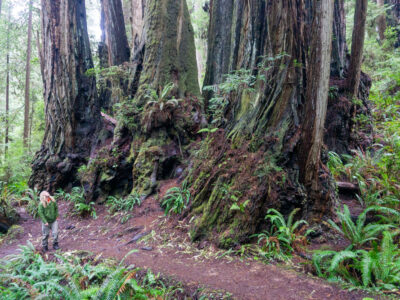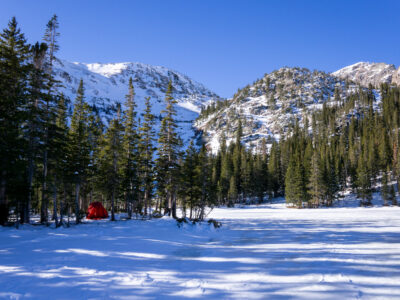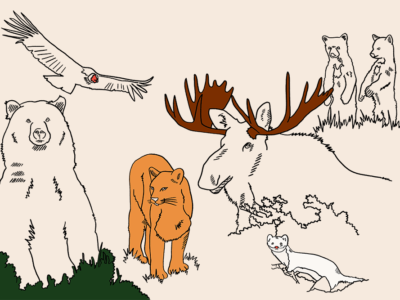15 Oct Lessons from 3 failed snowy backpacking trips
Journal
Lessons from 3 Failed Snowy Backpacking Trips
October 15, 2019
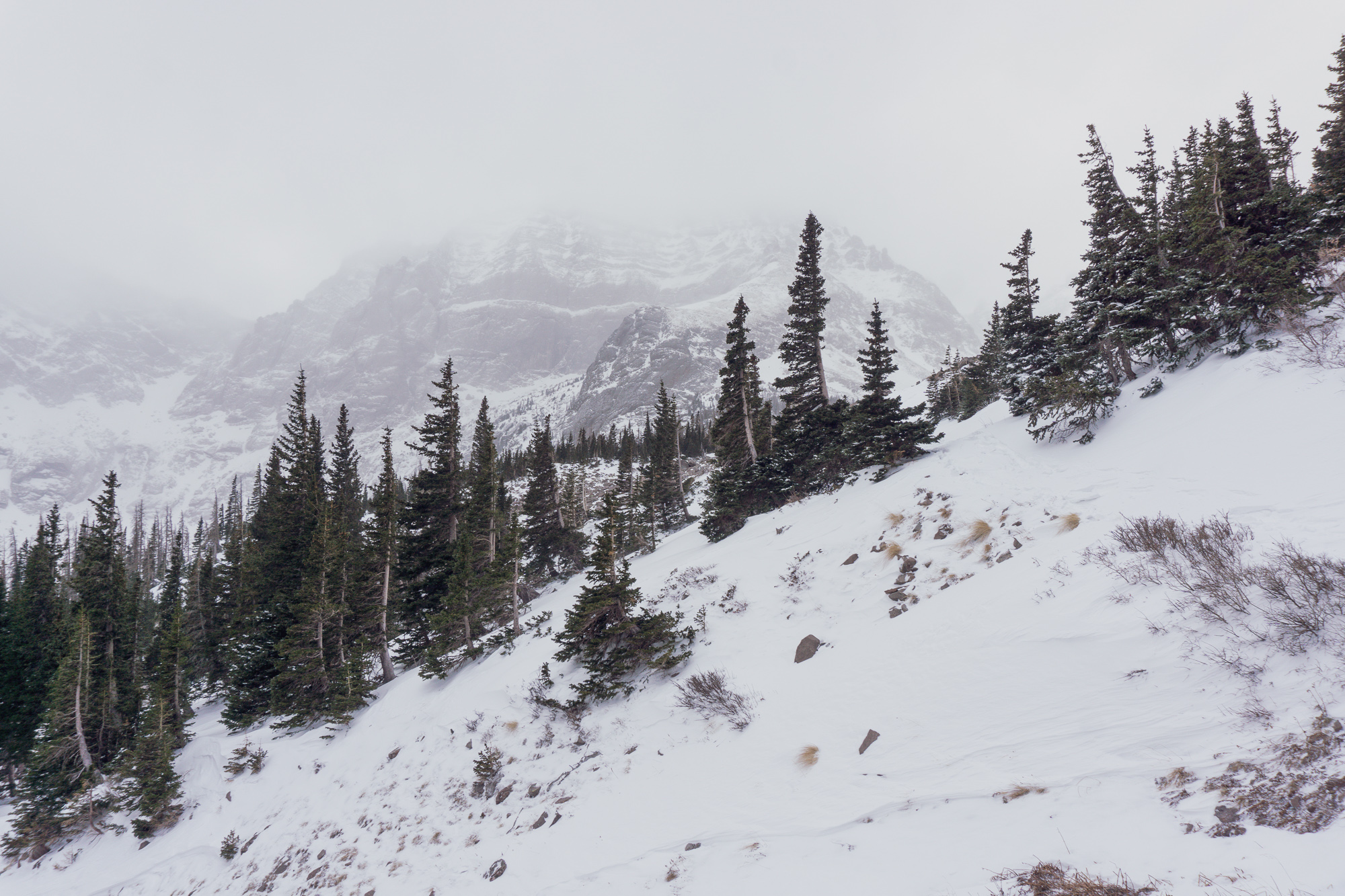
I’m sharing a crop of our most embarrassing winter backpacking moments because learning from other people’s mistakes is way less painful than learning from your own. We’ve made so many mistakes on winter backpacking trips that I’m surprised we haven’t lost a couple toes to frostbite – although one of my pinky toes is permanently numb, so there’s that…
Here’s a small collection of our biggest snowy disasters.
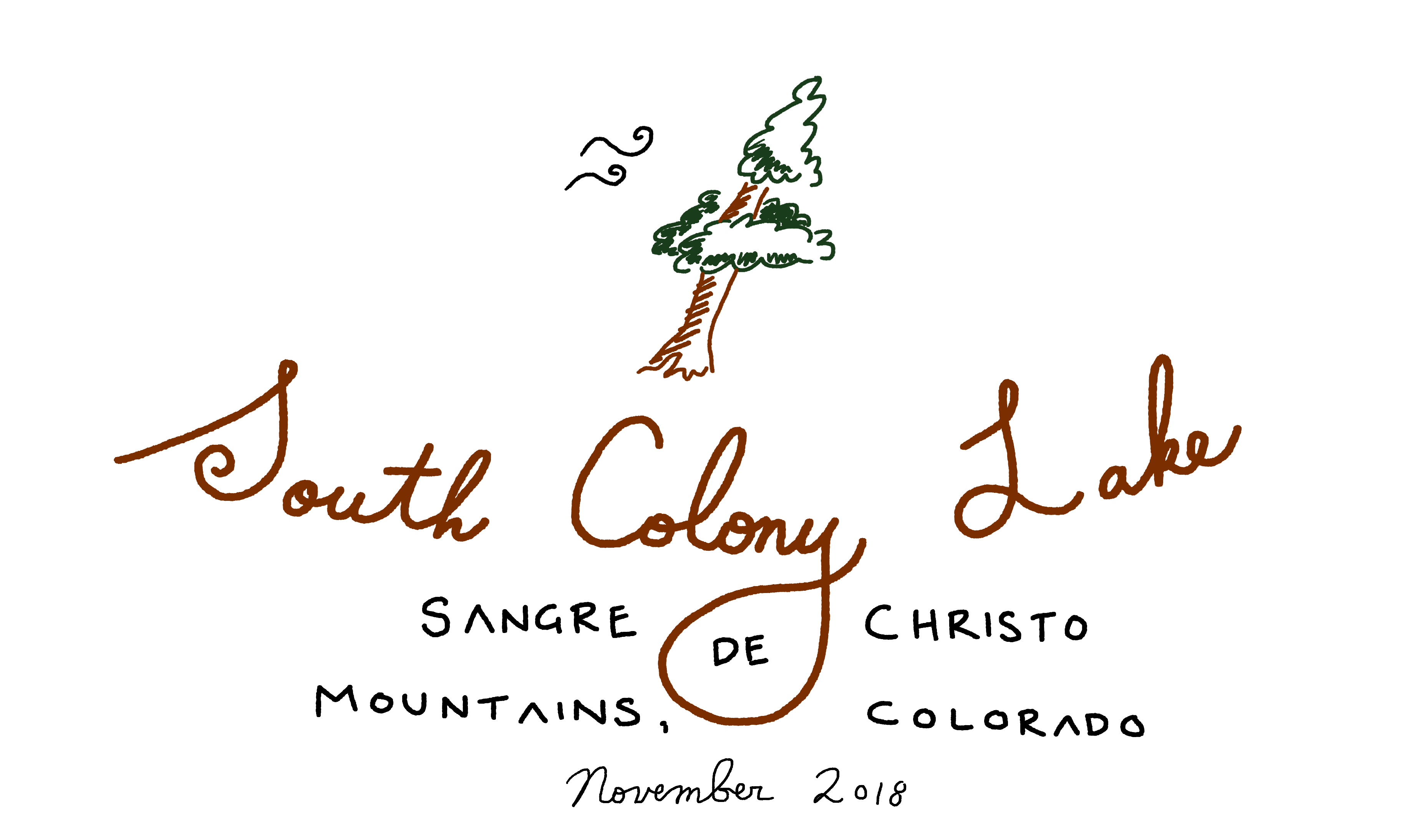
We messed up quite a bit with this one. The weather was so horrible and we were so desperately cold, that we ended up having to pee in a cup inside of our tent. Backpacking makes you do some pretty uncomfortable things sometimes, but I think this is the absolute worst it’s ever gotten.
Anyways, last Thanksgiving break we wanted to go backpacking, but there was a winter weather advisory all over Colorado. We’re talking snow storms everywhere, road closures, and avalanches destroying everything. I found a small pocket of mountains in southern Colorado called the Sangre de Cristo Mountains that were outside of the weather advisory, so we decided to go there. Never mind, that the predicted wind speed was faster than our Subaru can drive up a moderate uphill grade (our poor little car has a lot of trouble with hills).
As we drove south from Denver, giant wind gusts threatened to push our car off the road and we had to dodge a couple giant tumbleweeds on the road. This got me a little worried that conditions would be bad, but I comforted myself with the thought that tree cover would provide some protection from the wind. I was very wrong about that.
At the trailhead, the wind was so bad that the second we opened a car door, all our stuff went flying. It was the kind of wind that tries to rip the door right off your car. Oblivious as ever, we got ready and started the hike.
The route is 5 miles on an unplowed dirt road and then 1 mile on a real backcountry trail. There was about one to two feet of fresh snow on the ground. The portion on the dirt road was fairly easy; although, every time a giant wind gust would come through, our eyes would shoot up to the tree tops to make sure one of the dead trees wasn’t going to crash down on us. We eventually made it to the backcountry trail portion of the trip, where a bit of route-finding would be happening. This wasn’t a big issue, because another pair of hikers had just snowshoed out from the lake, so we just followed their tracks.
So far, the whole hike had been below the tree line, and as it turns out, the trees were actually protecting us from the wind a lot more than we thought. The second we got out of the dense tree cover, a gust of wind knocked me right over onto the snow. At this point we were struggling against the wind and the cold… and things weren’t going so great for us. We decided that there was no way we could hike 1 mile in this horrible weather and that some of the more exposed areas we’d have to cross may even be dangerous in the strong winds.
Defeated, we set up camp next to the most trustworthy trees we could find. We wanted tree cover from the wind, but we were also worried that the trees could crash down on us during the night. In retrospect, I think we should have backtracked to an area below the tree line with a bit less wind, but at that point, we were pretty done for the day.
I think we broke the world-record for fastest tent set-up that day. The wind was hurling the tent all over the place, but we were so desperate to get inside that we powered through like champions. After getting slapped around by our tent for a couple minutes, we were proud owners of a perfectly assembled tent in the middle of nowhere. We dived inside and hunkered down.
This brings us to the peeing in a cup incident. Yes, we had to do this; no, I’m not proud of us. And no, I won’t be writing a detailed guide about how to do it. The sun quickly went down, the temperature dropped to around 8°F, and we vowed to never leave the tent again. We even cooked inside our tent, but that’s not that weird.
The quality of sleep that night was also non-existent. Dylan ended up on the windy side of the tent where his face was slapped by our tent every time a strong gust came through – which was about every five minutes. The whole tent would practically flatten against us during a particularly huge gust. One thing that I didn’t even think of beforehand, is that during the winter, condensation forms on the inside of a tent and then it gets really cold and sometimes freezes. And being slapped by an icy sheet of heavy-duty tent-fabric might be the worst thing in the world.
The big lesson from this flaming dumpster fire of a trip, is that bad weather can really mess things up during winter backpacking trips. I was being stubborn and really, really wanted to go backpacking during Thanksgiving Break, even though all signs showed that the weather was going to be bad and we should’ve just stayed home and eaten lots of food.
My take-away from this disaster, is that whenever possible, backpacking trips should be planned around weekends with good weather, instead of specific dates. Backpacking can be a very spontaneous activity when you have all your gear ready and have a good knowledge about the parks closest to you. All you need to do is monitor the weather at your favorite parks, and then pack up on a random Friday for a beautiful, sunny weekend. Additionally, I learned that even though suffer-fest backpacking trips make for a great story and make you feel hardcore; sometimes it’s nice to just have a nice time.

This one is a tale of two naive backpackers who decided not to take snowshoes on a winter backpacking trip and then had a horrible time. The title of the trip says Panther Gap but truthfully, we never made it there because of our sad frozen feet.
This trip was our first real snow trip, which meant that we didn’t really understand how to judge the amount of snow in the backcountry. We were essentially snow optimists. We could talk ourselves out of taking snowshoes no matter what – “they’re so heavy, I don’t want to carry them the whole way just to find out we didn’t need them.” So with that sentiment, we left the snowshoes in the trunk of the car where they were useful to exactly no one.
The first couple miles of the trail looked just like the trailhead – about two inches of easy-to-walk-on packed snow. However, when we got past the Giant Sequoia Grove, we realized that the reason the hike was so easy in the beginning was because the trail to the Giant Sequoia Grove got enough foot traffic in the winter to flatten the snow and melt it a bit.
We quickly found out that no one had hiked past the Sequoia Grove, because the snow past the grove was fresh, fluffy, and infuriating. To get to Panther Gap from the grove, we were looking at three miles of post-holing through at least two feet of fresh snow. Every time I took a step I would sink into the snow up to my thighs and then have to bail myself out or have Dylan hoist me up by my backpack like a building crane. Needless to say, this was not great.
So I had a couple tantrums at this point. Both of us had fallen into the snow one too many times and we were at our limits of cold, wet and frustrated. Finally, we were sick of post-holing through the dumb snow and just plopped our tent down on the ridge nearby. At least we’d have a view.
We never made it to Panther Gap and it was very disheartening, because up to this point in our short backpacking career we had never not made it to our destination. On top of that, it’s the park’s rule that we had to camp past Panther Gap and we’re big rule-followers when it comes to the outdoors.
There was some discussion about what went wrong and the overwhelming consensus between the two of us was that we really should have brought snowshoes. We put that lesson into practice a month later on a trip to Pear Lake in Sequoia and actually made it to the lake! That was a big moment in winter camping for us.
Surprisingly, this snowshoe lesson is one I seem to relearn every single year. On the first snow trip of the 2018 season, I underestimated the snow and left the snowshoes in the car again. Unsurprisingly, we didn’t make it to our final destination and while we were bailing snow and water out of our boots, we vowed, once again, to take snowshoes next time.
How do you pick the right snowshoe? I have no idea. But there’s a million people online ready help you with that (1, 2, 3, 4). We went for an inexpensive pair from Amazon and they’re okay for the price point. If you have sensitive or weaker ankles, you may want to shell out more for a nicer pair though, because my cheapo pair has no ankle stability.
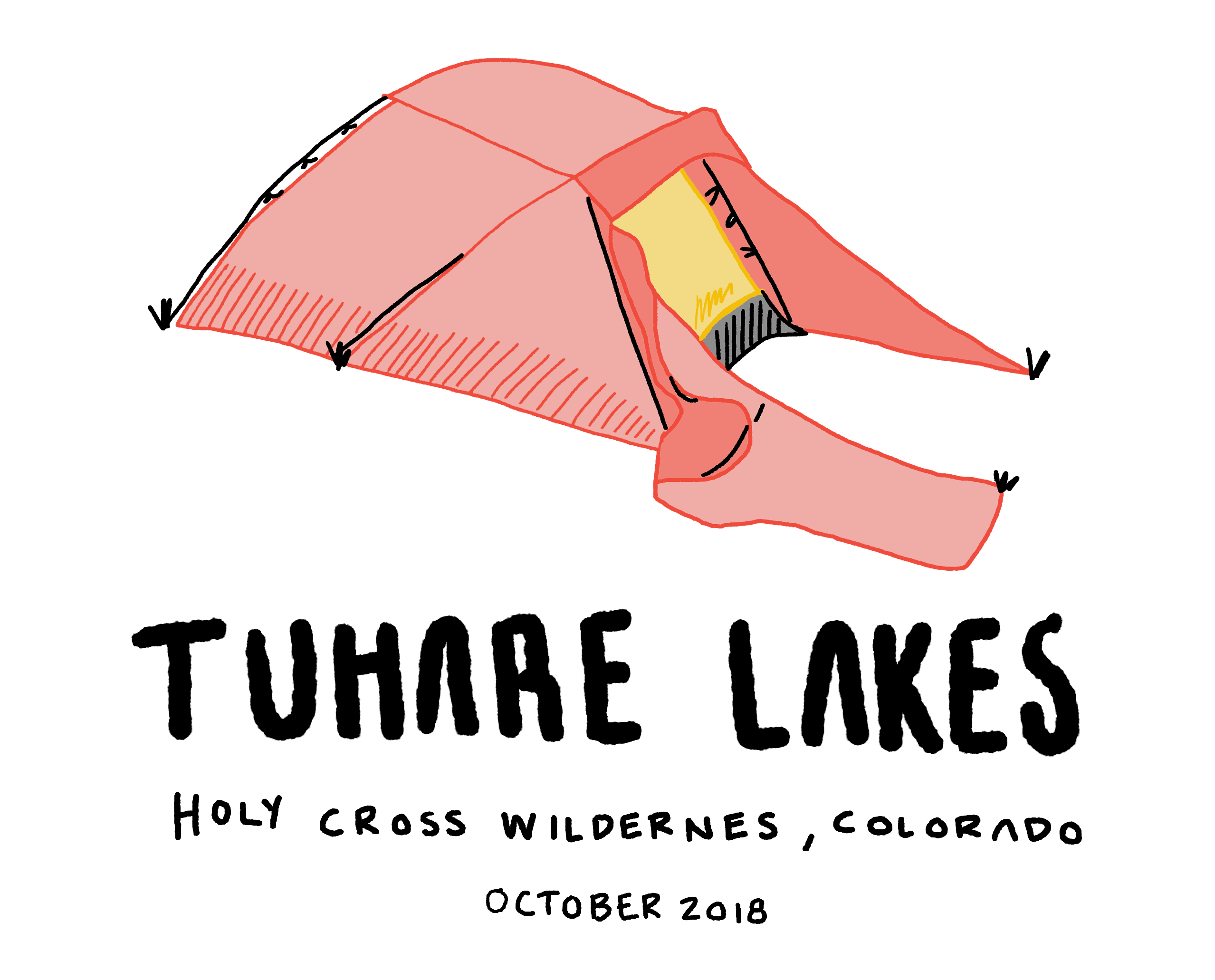
I have a defense for the poor performance on this trip, but I’m not sure it makes any difference: when I was planning this trip, we were brand new to Colorado and I had no idea that snow would fall so early, and so densely, in the backcountry. It was only October! Plus, I had called a park ranger at the Holy Cross Ranger Station to ask about the snow and she sounded pretty confident that there wouldn’t be snow on the trail. Well, there was, and it was icy too.
Anyways, the summary of this disaster is that I planned a very ambitious 12 mile round trip thinking there would be some snow but definitely not a lot of snow. We didn’t bring snowshoes because – you know – we never learn, and had to posthole the last 2 steep, uphill miles of this trip. And, of course, we didn’t make it to the Tuhare Lakes. We did, however, make it to Lake Constantine along the way, so we got that consolation prize.
Lake Constantine was beautiful, but by the time we got there, the sun was going down and we were too cold, tired and hungry to explore the lake too much. The hike had drained us way more than expected and we were pretty defeated. We just cooked and retired to the tent super early. It was great to just get out of the cold and snuggle up inside the tent.
I learned a couple things from this failed trip:
Bring your snowshoes. Always. If we can see any snow, at all, at the trailhead, I’m bringing my snowshoes. That is, until next year when I have to learn the snowshoe lesson again.
Start with smaller distances. Winter backpacking takes a high level of fitness that needs to be developed over the course of several trips. This was our first snowy trip of the season so we had no business attempting 12 miles of hiking. Post-holing and snowshoeing take up a lot more energy than regular hiking – plus, winter packs are typically at least 10 lbs. heavier than regular packs. Next year, I’m going to aim for about 8 miles total for our first winter trip.
Don’t trust everything the park rangers tell you. There are a lot of things that you can trust them about like park rules, trailhead status and usually summer trail conditions, but in the winter, I’ve never gotten good snow information from a ranger. My guess is that they don’t regularly patrol in the winter, so they don’t really know how much snow is on the trails at any given time.
Have you had any epic backpacking disasters? We would love to hear about them. (Mostly just to feel better about our own disasters.) Leave a comment down below with your stories!

